- Learning time
- 60 minutes
- First play time
- 240 minutes
The Romans : Kingdom, Republic, Empire
Designed by: Gary Dicken,Phil Kendall,Steve Kendall
The Romans is not an easy game to sum up concisely in the narrow confines of GNG: despite the quirky, cartoon-like presentation, it’s something of a sprawling epic: not just across the centuries of Roman conquest in the dim and distant past, but across the very fabric of reality, as each player struggles to expand and control their individual Roman empire in what the publishers refer to as a quantum system of gaming.
What that actually means is less inhibiting than it might sound, however: each player has their own map of the potential empire: the surrounds of the Mediterranean from north Africa to southern Britain, broken into provinces. Players begin with a small presence on the board in the form of a Legion at Rome itself – and every other province is occupied by native forces – the human obstacle between you and future triumph. Over five eras everyone attempts to score the most points by virtue of spreading across the maps and developing their own bespoke empire. How does it work? By the cunning use of Senators.
You begin with four Senators at your disposal, each with a ranking (I to IV) and on a given turn, you can either place a Senator in a building in Rome itself or go rampaging on the map by turning one of them into a General instead. Let’s look at the former first, as Rome is represented by a cloth ‘array’ that shows the various buildings you might visit. Five buildings are available in every game, from the Forum to the Basilica Aemila they all allow you to build either literally (legions/cities/forts/walls/fleets on the map) or figuratively by raising the ranks of your senators: the higher-ranked a senator is, the more powerful the action they gain from a building but do note: only one of each ranked Senator can occupy each building. And the buildings have a price too; costing gold or resources to visit.
Fortunately every player also has the option of sending a Senator to their Citadel: a kind of private action spot where you can gather more money or make adjustments to your map.
The map is of course where the action is. In every era you’ll have a specific province you aim to control, but the native forces will fight your General and his legions back if they can. But there’s no sitting-pat in The Romans: assuming you defeat the locals, your army must either return to Rome or keep on conquering adjacent provinces: you can’t leave Gallia, say, overflowing with your legions ready for some idle future-proofing whim. And this is where the game’s curious combat system comes into its’ own: one player rolls dice for all of the current battles, no matter where they’re taking place. It is otherwise pretty straightforward, though, with Roman numbers versus Native numbers + each die roll – and the one-size-fits-all idea does actually stop the game from grinding to a halt whilst multiple players roll multiple dice.
Once all your Senators have either been placed or turned into Generals and exhausted, everyone returns to Rome ready for the next era – although before that happens, there is an Enemy Response across all maps: Warbands arise, fleets may be eliminated, provinces attacked and, should the residing legion (the ‘garrison’) be defeated, just like the bloodthirsty Romans, the enemy will keep on attacking until they’re out of individuals to attack with. Thus, the ultimate futility of war plays out over and over, like the tides of time washing in and out. A new era begins with an additional building being revealed in Rome, and players gathering their forces and thoughts to begin again… until the fifth era ends, and one players Empire will be recognised as the best of all.
Joe says
I've not played this - while the Asterix/Horrible Histories visual style appeals, I'm not convinced I'd like the gameplay.
The guru's verdict
-
Take That!
Take That!
Player interaction is confined to Rome itself and the nabbing of spaces that, no doubt, someone else would have liked for themselves. But most of the feistiness comes from the game itself - the native forces that resist; the warbands that counterattack.
-
Fidget Factor!
Fidget Factor!
Despite the length of the game overall, fairly moderate. The 'quantum' battle system means there's less downtime than there might otherwise be, and with two players especially things move pretty fast. That said, with four there's sometimes a bit more to chew over when Plans A and B have gone up in smoke thanks to other players taking a building spot you wanted.
-
Brain Burn!
Brain Burn!
Although it's not the easiest game to learn, once you're through the door the rules aren't too dense and the brain-burning is more a calculation of what you want to risk on the map and/or where you can afford to go in the buildings.
-
Again Again!
Again Again!
The buildings, leaders, and warbands all have an unpredictable aspect, and then of course there's the slings and arrows of the dice-rolling. That's before you get to player input - there are divergent paths to choose in Romans, although none of them are particularly saintly...

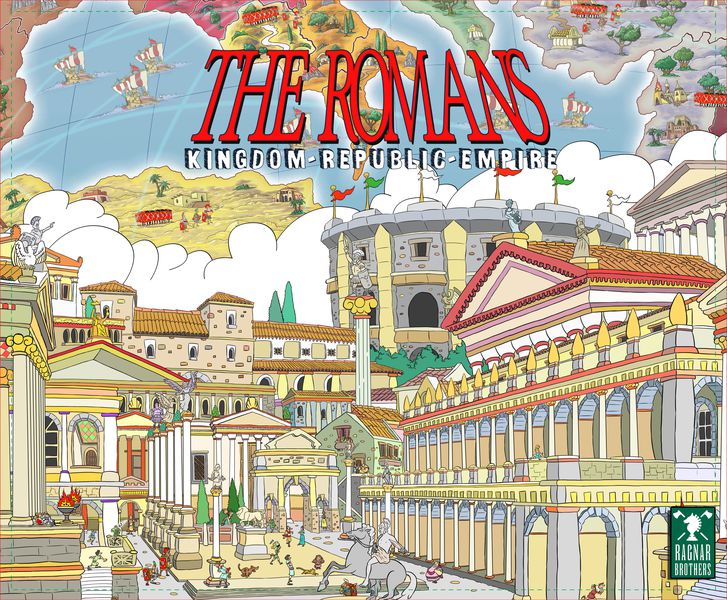

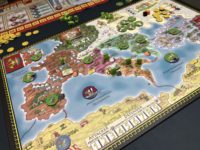
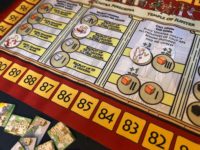
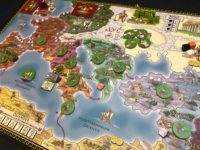
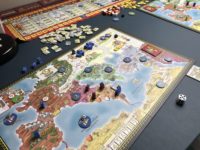


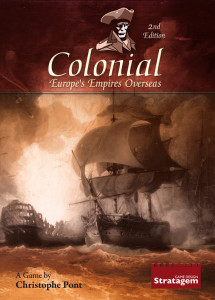


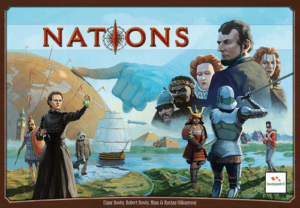

Sam says
By no means a comprehensive rules overview, but hopefully enough to give you a taste of Romans. There's rewards also for conquering far-distant provinces and controlling all of Italy itself... and there's much to enjoy here: I like the dice-chucking combat system and the crazy many-narratives arc of the game. It might not be as elegant as Trajan, for instance, but it certainly tells a story of empire, whereas the latter is more a puzzle. On a purely subjective level the presentation isn't my bag, but it does give it a friendly, approachable air - a homespun flavour, in fact, that permeates the entire production, which was deliberately designed to be that one thing that very few publishers offer: a big game on a budget. Romans comes in at around the third the price of many titles that might have a lot of frills, but can't boast better gameplay. That in itself is a big tick and hats off to the publishers for prioritising affordability.